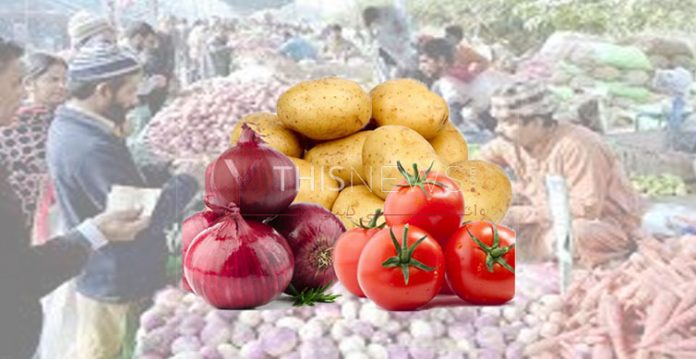New Delhi: Retail costs of household necessities, particularly tomato, potato, and onion have increased across the nation as the supply of these vegetables dropped because of substantial downpour and flash floods, upsetting homemakers to deal with their domestic budget when the earnings of numerous households across the nation were hit by the pandemic.
LocalCircles directed a survey to see how many extra individuals have been spending to buy per kilogram of onions, potatoes, and tomatoes as buyers show discernment over the rising costs of these vegetables in the course of the last two months.
It moreover attempted to understand the average amount a household paid for the current year for purchasing these vegetables when compared with 2019. The survey got more than 16,000 replies from residents across 242 areas of India. Of these, 58 percent were from tier 1, 23 percent from tier 2, and 17 percent of respondents were from level 3, 4, and rural regions.
To the initial question that asked, “What best describes the per kilogram price that your household paid for purchasing onion, potato, and tomato in the most recent purchase?” – 8,273 replies were gotten from citizens.
Notably, 71 percent of residents said they are paying more than Rs 50 per kg for tomato, Rs 40 per kg for potato, and Rs 50 per Kg for onion. In comparison with a comparable survey by LocalCircles issued on September 11, 2020, 61 percent households had said they were paying more than Rs 60 per kg for tomato, Rs 30 per kg for potato, and Rs 25 per kg for onion.
This implies that while an average retail price greater part of households paid per kilogram for potatoes rose by 30% and onions rose by 100%, while the cost for tomatoes fell by 15 percent in only one month. The individual information on the three vegetables recommends that 42 percent of residents purchased “tomato at Rs 60 or higher, potato at Rs 60 or higher, and onions at Rs 70 or higher.”
While the cost per kilogram for tomato paid by the majority of the residents marginally decreased over the last 30 days, the cost per kilogram for potato rose by 30% and the cost per kilogram for onion rose by 100% upsetting the household budget for essentials.
The subsequent question posed to residents, “Overall, in 2020, how the much higher price has your household paid on average for tomato, potato, and onion in comparison with 2019?” – 7,904 residents replied.
Notably, 70% of households said they paid 25-100 percent greater expenses this year for purchasing per kilogram of tomato, potato, and onion
This is demonstrative of a squeeze given the way that numerous households have confronted the critical loss of income or loss of work during the pandemic. Sectors like the travel industry, hospitality, and restaurants have confronted extreme cutbacks as individuals keep on restricting movement in view of the fear of COVID-19. Those employed in many such sectors are dipping into savings, taking high-interest loans just to get by.
Experts, referring to government information, state that the exchange of these perishable vegetables in the retail market goes up at various rates across states because of many factors from interrupted supplies, largely because of unchecked regulation on its exchange. In the interim, some states have begun taking actions against vegetable hoarders, as such, with an end goal to guarantee reasonable costs in the market but with limited success.
An unregulated climb in the cost of these vegetables or essentials and goods isn’t new to the nation. For example, a comparative survey issued by LocalCircles on September 11, 2020, found that 73 percent of families are spending more on monthly essentials and grocery items in comparison with pre-COVID-19. In the months of March and April 2020, they reported being charged over the MRP cost as many were hoarding essentials dreading its shortages in the market confronting COVID-19 lockdown at that time.
In the eight months of the pandemic, many are yet to completely recuperate from the giant-fall in their own income confronting job losses, pay cuts, and delays. The ascent in costs of household necessities has just added weight to homemakers’ troubles, particularly for low-pay earning households.







